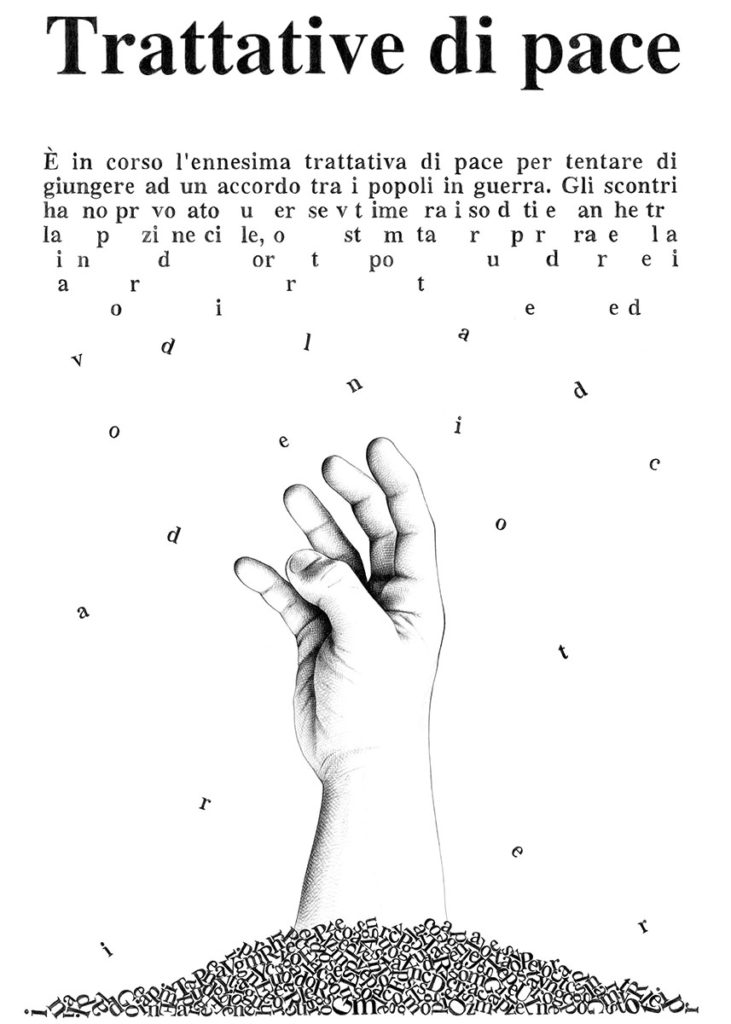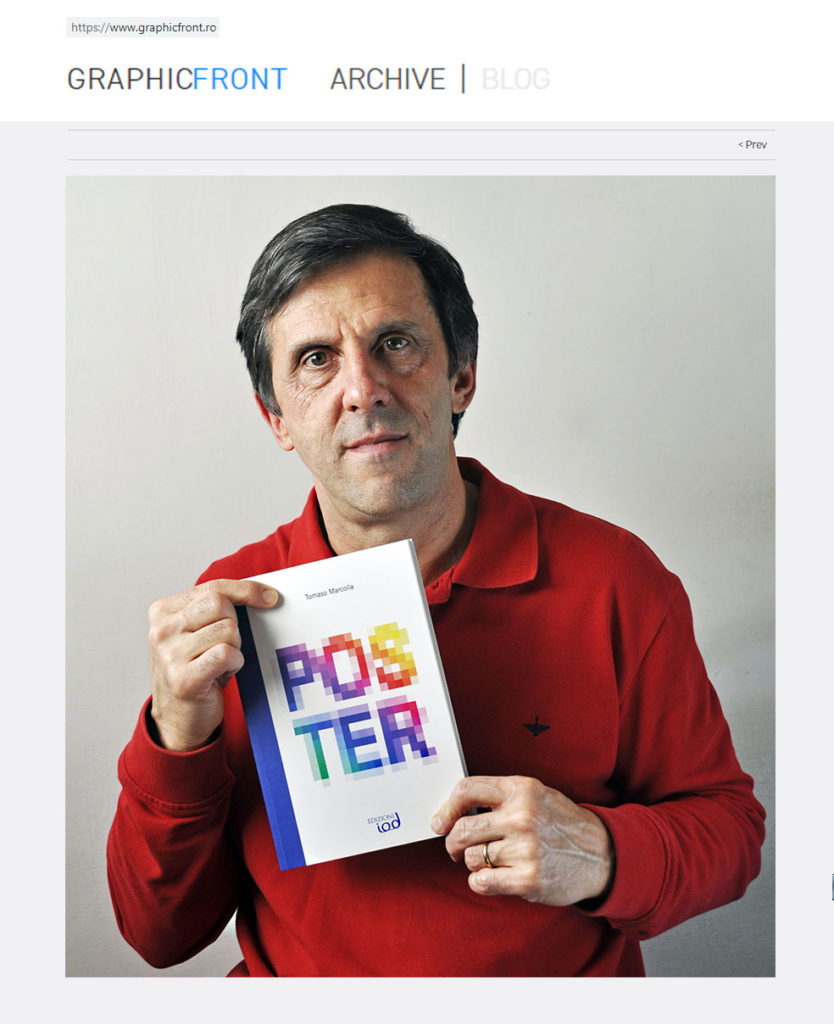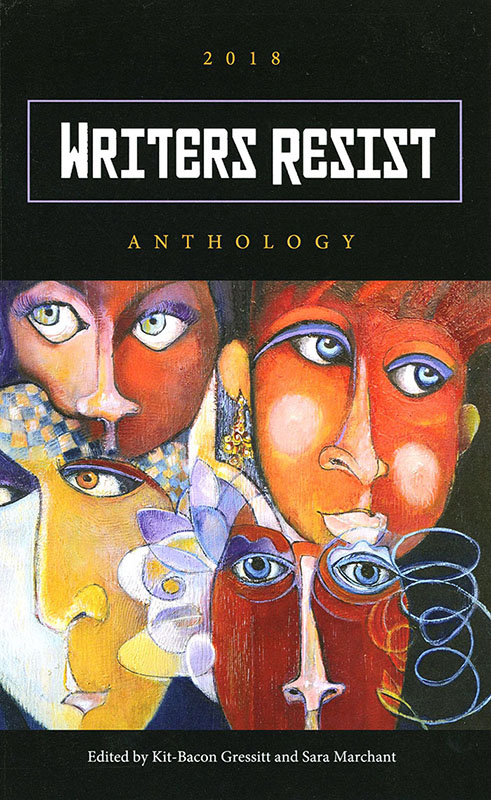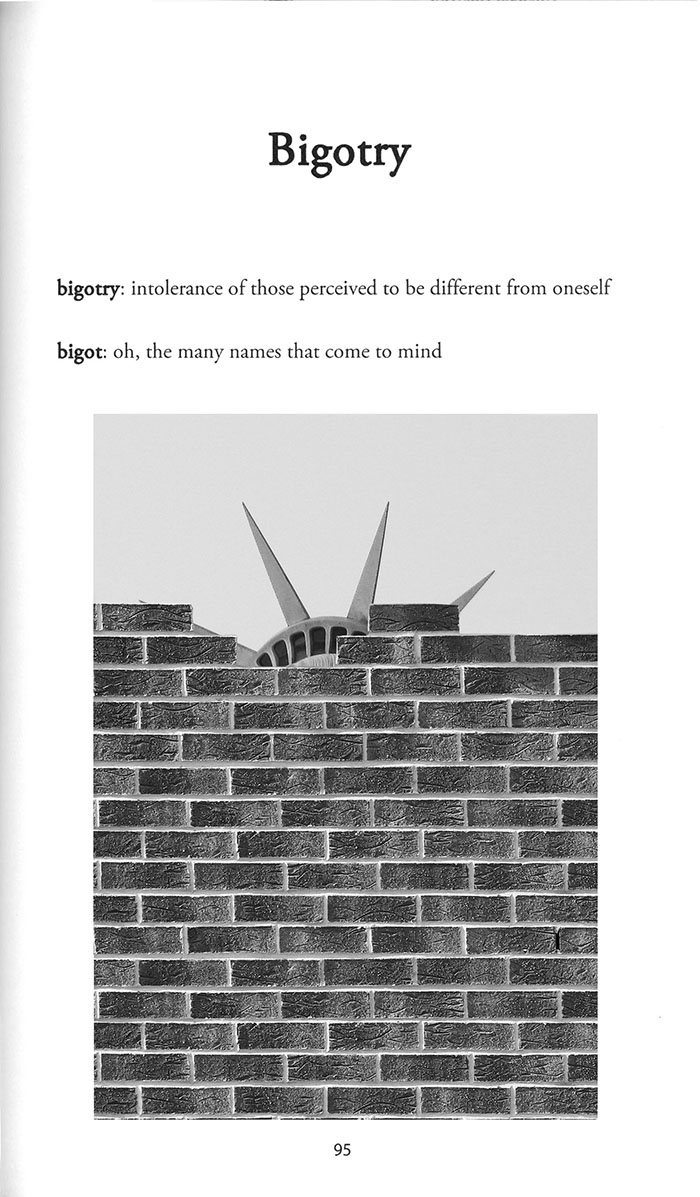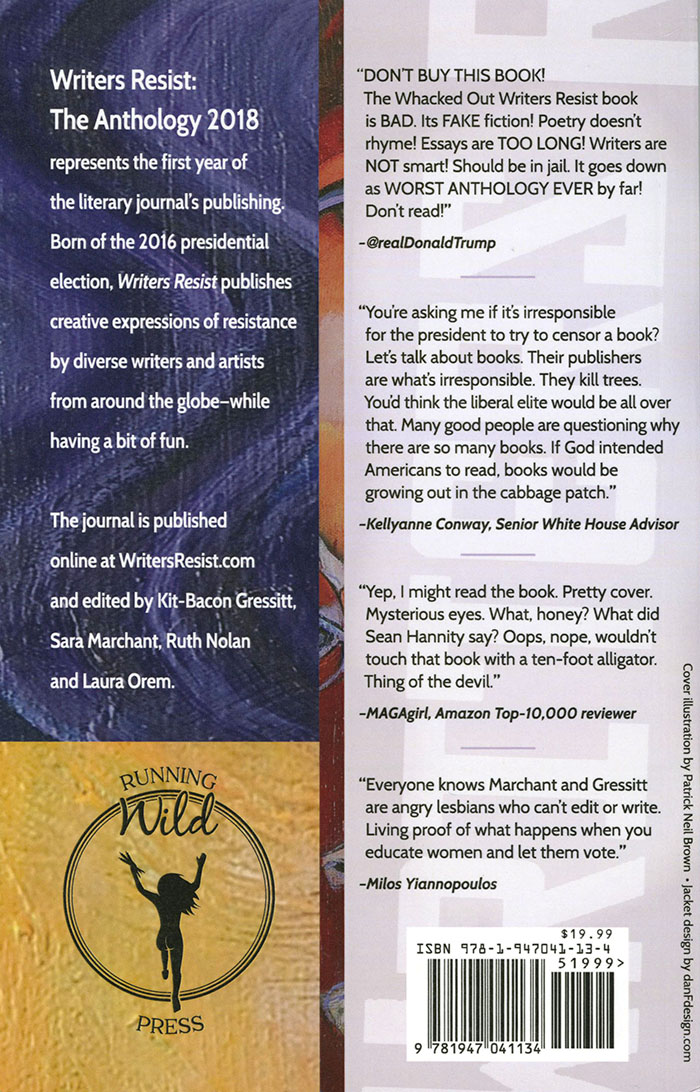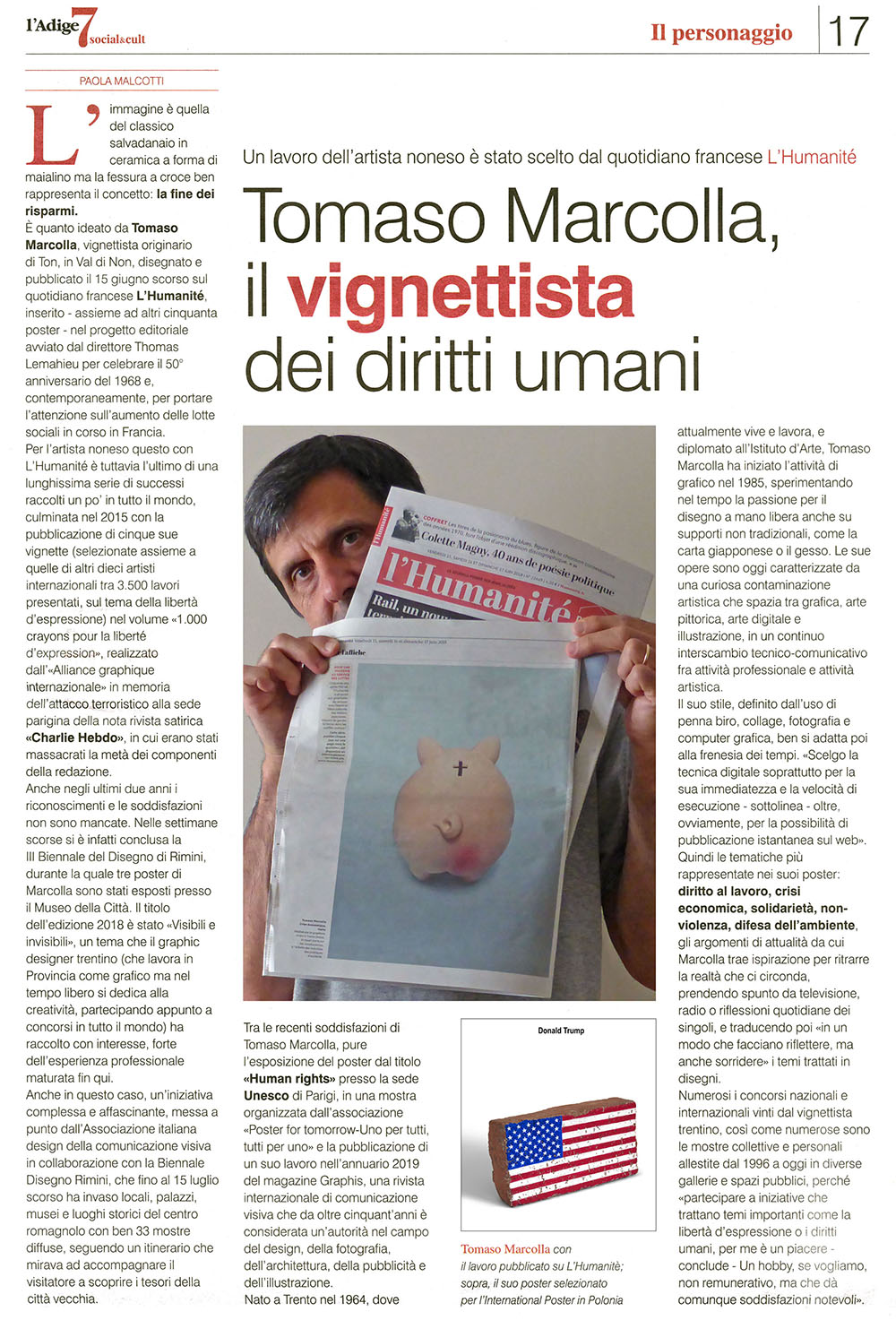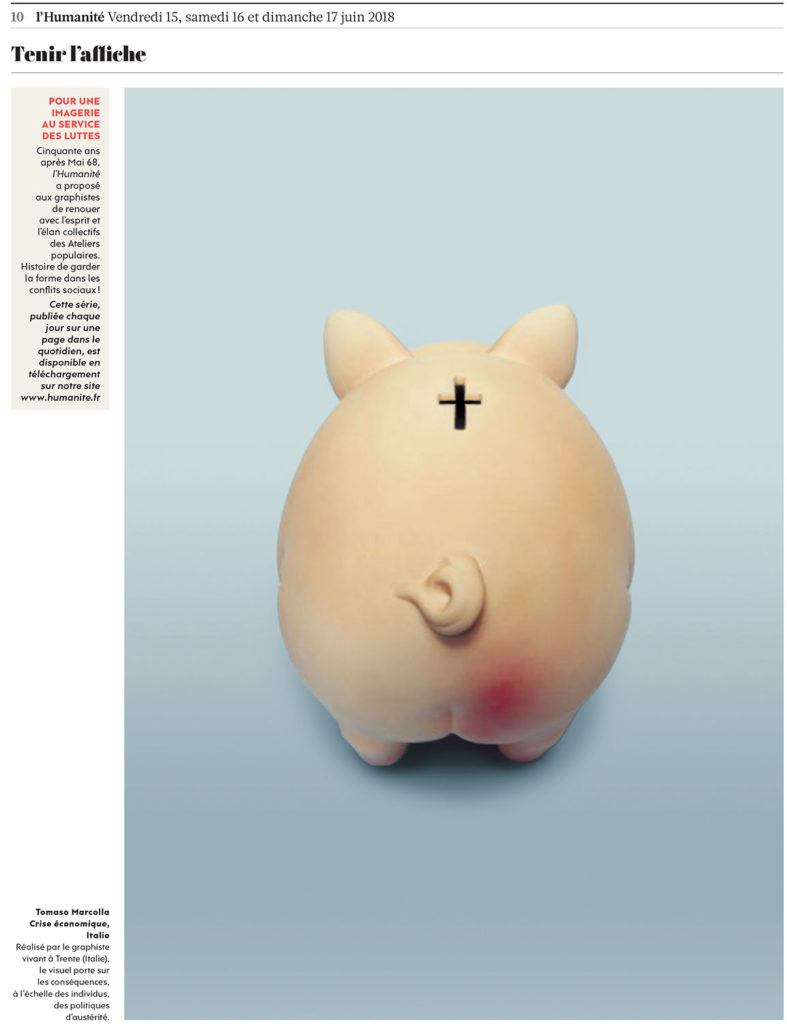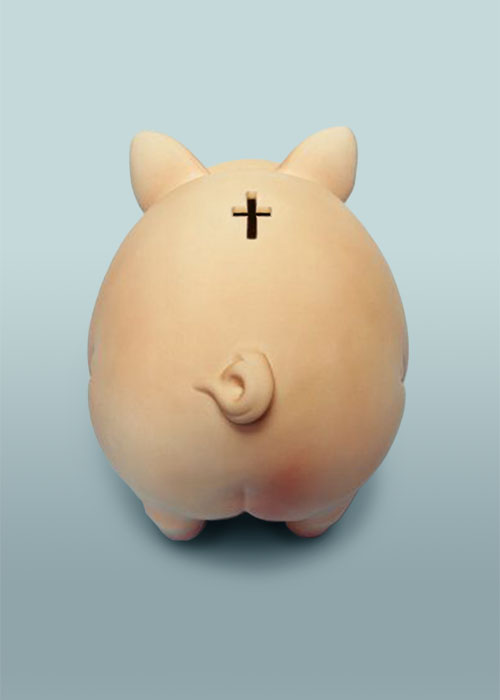
Il 1 maggio inizia la mostra internazionale del design Minsk Design Week 2019!
La Design Week di Minsk riunirà designer e architetti di tutto il mondo. Nei 10 giorni dell’evento la Città Alta si trasformerà interamente in uno spazio espositivo con padiglioni, esposizioni e installazioni.
Quest’anno, la settimana del design si concentra in un formato non standard: interdisciplinarietà, integrazione, collaborazione, interattività e partecipazione attiva dei visitatori.
Tomaso Marcolla partecipa con 2 nuovi progetti dal titolo “Cubo” e “Prato prensile” ed una esposizione di poster.
MINSK DESIGN WEEK 2019
The launch of the international exhibition Minsk Design Week 2019 will take place on the 1st of May!
Minsk Design Week will gather designers and architects from all over the world. During these 10 days territory of the Upper Town will become an exhibition space with pavilions, expositions and installations.
It’s a worldwide conception aimed at bringing people together to share recent achievements in the field of design and to introduce innovations.
This year Design week will not follow the usual format but will show interdisciplinary approach, integration, collaboration, interactivity and active involvement of visitors.
Minsk, Belarus – Bielorussia – Città alta – dal 1 al 10 maggio 2019
Sfoglia i depliant descrittivi distribuiti presso Minsk Design Week 2019!
https://issuu.com/tomasomarcolla/docs/cubo
https://issuu.com/tomasomarcolla/docs/prato
https://issuu.com/tomasomarcolla/docs/poster
Questi sono i pannelli (cm 100×140) esposti presso i padiglioni della mostra.
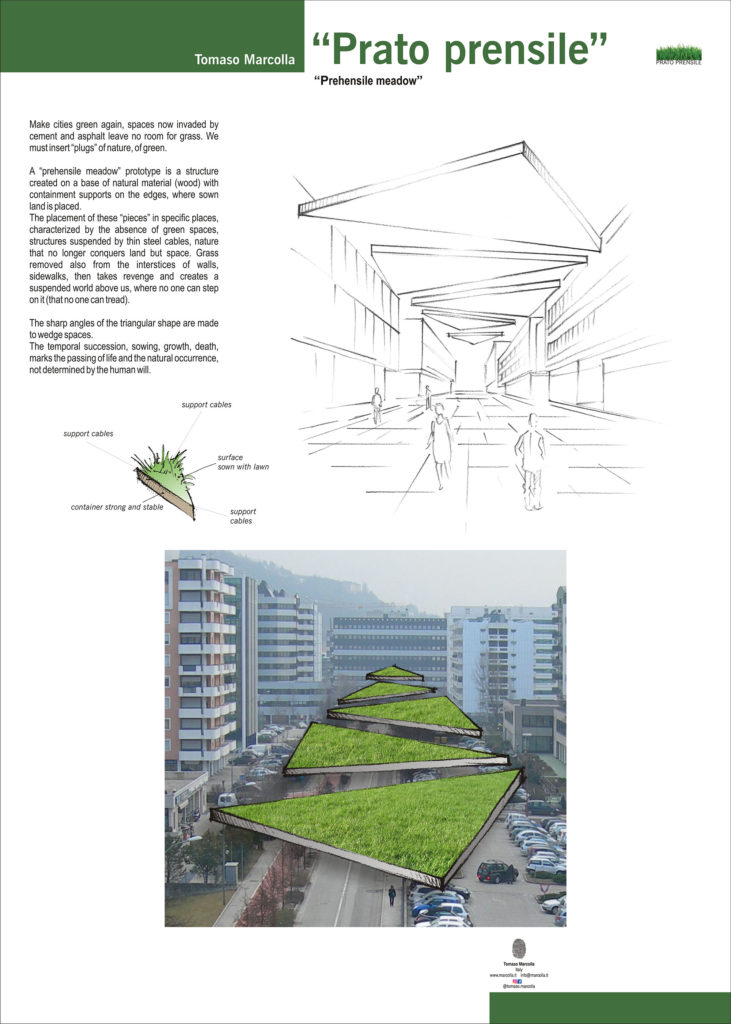
PRATO “PRENSILE”
Rinverdiamo i luoghi della città, gli spazi ormai invasi da cemento e asfalto non lasciano spazio all’erba. Inseriamo dei “tasselli” di natura, di verde.
Un prototipo di “prato prensile” una struttura formata da una base di materiale naturale (legno) con dei supporti di contenimento ai bordi, dove si colloca la terra seminata a prato.
La collocazione di questi “tasselli” in determinati luoghi, caratterizzati dall’assenza di spazi a verde, strutture sospese mediante cavi sottili di acciaio, la natura che conquista non più il terreno ma lo spazio. L’erba che viene eliminata anche dagli interstizi dei muri, dei marciapiedi, allora si vendica e crea un mondo sospeso sopra di noi, dove nessuno la calpesta.
La forma triangolare con angoli acuti fatta per incunearsi negli spazi.
La successione temporale, semina, crescita, morte scandisce il trascorrere della vita ed il naturale accadimento, non determinato dalla volontà umana.
PREHENSILE MEADOW
Make cities green again, spaces now invaded by cement and asphalt leave no room for grass. We must insert “plugs” of nature, of green.
A “prehensile meadow” prototype is a structure created on a base of natural material (wood) with containment supports on the edges, where sown land is placed.
The placement of these “pieces” in specific places, characterized by the absence of green spaces, structures suspended by thin steel cables, nature that no longer conquers land but space. Grass removed also from the interstices of walls, sidewalks, then takes revenge and creates a suspended world above us, where no one can step on it (that no one can tread).
The sharp angles of the triangular shape are made to wedge spaces.
The temporal succession, sowing, growth, death, marks the passing of life and the natural occurrence, not determined by the human will.
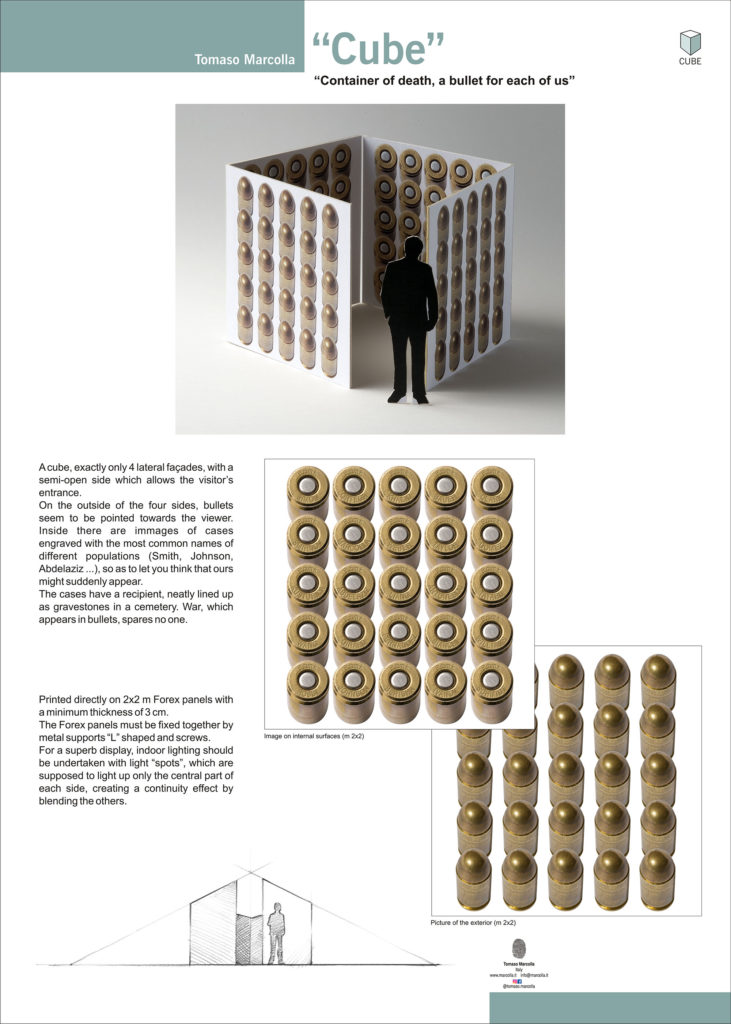
“Contenitore di morte, un proiettile per ciascuno di noi”.
Un cubo, per l’esattezza solo le 4 facciate laterali, con un lato semiaperto che permette l’entrata del visitatore.
L’esterno, sui quattro lati, appaiono dei proiettili puntati verso lo spettatore. All’interno vi sono le immagini dei bossoli con incisi i nomi più diffusi delle varie popolazioni (Rossi, Johnson, Abdelaziz…), così da poter pensare che anche il nostro vi possa comparire.
I bossoli hanno già un destinatario, ordinatamente in fila come delle lapidi in un cimitero. La guerra, visualizzata nei proiettili, non risparmia nessuno.
La stampa direttamente su dei pannelli di m 2×2 in Forex dello spessore minimo di 3 cm circa.
I pannelli in forex devono essere fissati tra loro mediante supporti metallici “a L” e viti.
Per una suggestiva esposizione, l’illuminazione dell’interno si dovrebbe realizzare con una luce “spot” che illumina solo la parte centrale di ogni lato, così da sfumare gli altri creando un effetto di continuità.
Container of death, a bullet for each of us
A cube, exactly only 4 lateral façades, with a semi-open side which allows the visitor’s entrance.
On the outside of the four sides, bullets seem to be pointed towards the viewer. Inside there are immages of cases engraved with the most common names of different populations (Smith, Johnson, Abdelaziz …), so as to let you think that ours might suddenly appear.
The cases have a recipient, neatly lined up as gravestones in a cemetery. War, which appears in bullets, spares no one.
Printed directly on 2×2 m Forex panels with a minimum thickness of 3 cm.
The Forex panels must be fixed together by metal supports “L” shaped and screws.
For a superb display, indoor lighting should be undertaken with light “spots”, which are supposed to light up only the central part of each side, creating a continuity effect by blending the others.
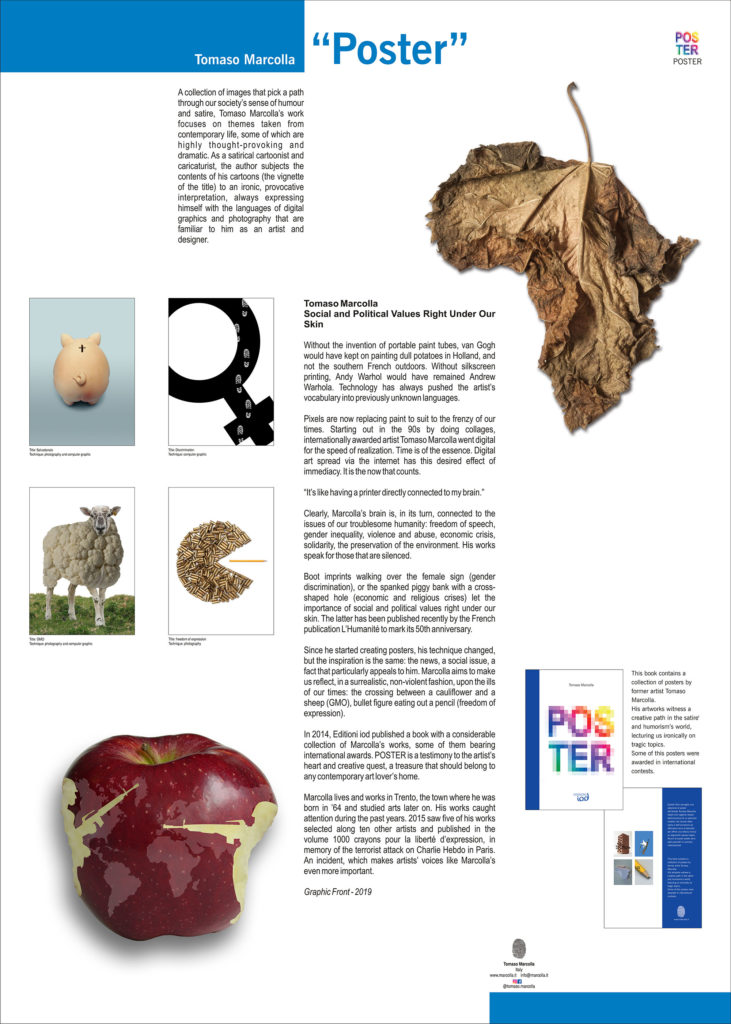
Una collezione di immagini che tracciano un percorso attraverso il senso dell’umorismo e della satira della nostra società, il lavoro di Tomaso Marcolla si concentra su temi presi dalla vita contemporanea, alcuni dei quali sono molto stimolanti e drammatici. Come fumettista satirico e caricaturista, l’autore sottopone il contenuto dei suoi cartoni a un’interpretazione ironica e provocatoria, esprimendosi sempre con i linguaggi della grafica digitale e della fotografia che gli sono familiari come artista e designer.
A collection of images that pick a path through our society’s sense of humour and satire, Tomaso Marcolla’s work focuses on themes taken from contemporary life, some of which are highly thought-provoking and dramatic. As a satirical cartoonist and caricaturist, the author subjects the contents of his cartoons to an ironic, provocative interpretation, always expressing himself with the languages of digital graphics and photography that are familiar to him as an artist and designer
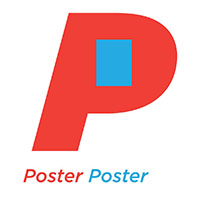 For this Poster Monday spot we have the work of a previously presented designer; Tomaso Marcolla and his first poster awarded for a competition “Peace Negotiations”. He started working as a graphic designer in advertising agencies since 1985.
For this Poster Monday spot we have the work of a previously presented designer; Tomaso Marcolla and his first poster awarded for a competition “Peace Negotiations”. He started working as a graphic designer in advertising agencies since 1985.